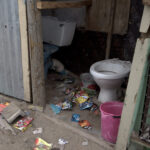Dear Tisa, you have a point but we’ve got a reason to be wary.
COMMENT
In a recent article, “Did Big Tobacco buy Twitter?” (September 7 to 13), we scrutinised the facts behind the tobacco-funded lobby group, the Tobacco Institute of Southern Africa’s (Tisa’s) #TakeBackTheTax campaign. The piece also highlighted the use of paid Twitter to advertise the campaign and concerns from public health officials about whether the adverts were, in part, aimed at undermining the new tobacco control Bill.
Tisa’s chairperson, Francois van der Merwe, responded to the article in this right of reply, taking issue with Bhekisisa’s focus on the research and alleged links between #TakeBackTheTax and the Bill, which he says were not put to him specifically.
Read Van der Merwe’s right of reply in full.
This is Bhekisisa’s response:
In the article, Bhekisisa did confirm that Tisa had paid Yusuf Abramjee to promote the campaign. Our journalist also asked Tisa who else had been remunerated so as not to single Abramjee out. Tisa declined to answer this.
At no point did Bhekisisa opine about whether or not Tisa should conduct a native advertising campaign.
However, whether unmarked native content can be equated to paid advertising clearly marked as such may be a matter of debate.
As in science, correlation is not causation. That the campaign’s launch coincided with the Bill’s release, and that Van der Merwe himself connects the illicit trade with the fate of public health ventures, is not to say that the #TakeBackTheTax campaign is tied to the Bill.
Bhekisisa would like to apologise that we did not put the allegation by public health experts that the adverts on combating the illicit cigarette trade were allegedly linked to the tobacco control Bill, to Tisa.
When asked about his views on the new Bill separately, Van der Merwe said: “The new Bill won’t make a difference. How do you reduce consumption when the market is flooded with illegal cheap cigarettes? That is one of the main reasons we say that the new Bill won’t stop consumption.”
In his right of reply, Van Der Merwe argues that Bhekisisa did not question the findings of the Tisa-funded research carried out by independent research company Ipsos. These findings are the basis for the campaign. Instead, he says Bhekisisa questioned “the fact that the underlying proprietary data was not shared with the M&G”.
To be clear, Bhekisisa asked multiple times to see the methodology that was used to conduct the study — this kind of information is included as part of every published peer-reviewed research. In fact, even your average master’s thesis has to state it categorically.
Tisa declined. Although Ipsos said it surveyed areas used by Statistics South Africa, it did not reveal how many. It also declined to explain how it calculated its sample size and how many of these areas were sampled — information we would have needed to ask statisticians if the results were generalisable or applicable to a wide area.
Tisa argued that revealing this type of data set would jeopardise future fieldwork by Ipsos. Roughly every five years, the SA Human Sciences Research Council completes a national household HIV survey by canvassing 1 100 communities or “enumeration areas” used in previous censuses. It does not list all 1 100 locations when it does this.
Being more transparent about Tisa’s survey work would not have betrayed the location of its research, but it would have answered questions that we regularly ask researchers. Questions that are often easier to explain once research has been published in peer-reviewed journals.
Tisa argues that it would be willing to disclose the underlying data — “which is extensive, technical and complex — to organisations who are qualified to analyse it and who will guarantee its confidentiality”.
We’re journalists. We know our limits. That is why we asked Tisa to release that data to the University of Cape Town’s Corne? van Walbeek as an independent expert. But that request was declined.
Interrogating how Tisa arrived at its findings is, in fact, part of “questioning the findings”, as mentioned in the Tisa response. The two cannot be divorced, particularly given that bad science has often been used to bolster the tobacco industry’s agenda.
In 1994, industry whistle-blowers leaked confidential documents from the tobacco industry to the New York Times. The leak became a deluge as successive lawsuits and congressional hearings resulted in the release of millions of previously confidential internal documents into the public sphere.
A 2001 study published in the American Journal of Public Health reviewed tens of thousands of these documents. The research detailed how the tobacco lobby set up a non-profit organisation to combat the idea that second-hand smoke caused cancer. The body, known as the Centre for Indoor Air Research (CIAR), sponsored “high- quality research” on indoor air pollution. Why?
“[W]e all know that many scientists will not accept funding directly from the industry, but will accept funding from entities like CIAR,” wrote a long-time lawyer for Philip Morris in the 2001 research.
CIAR became a buffer, researchers explain, allowing industry-funded scientists to produce seemingly independent results aimed at contradicting the link between second-hand smoke and cancer.
Industry-scientific consultants also infiltrated conferences. Japan Tobacco Inc, for instance, calculated that since 300 scientists were expected to attend the 1987 World Conference on Tobacco and Health, roughly 40 papers presented “would represent a [neutral] position [on] smoking [and] health, thereby exerting influence on the general tone of the conference”.
Tisa’s latest campaign may have noble ends. But in a world where historically unravelling the tobacco lobby’s intentions has been a game of smoke and mirrors, a healthy dose of scepticism about its methods may be expected, particularly in light of the organisation’s refusal to share its full methodology.













